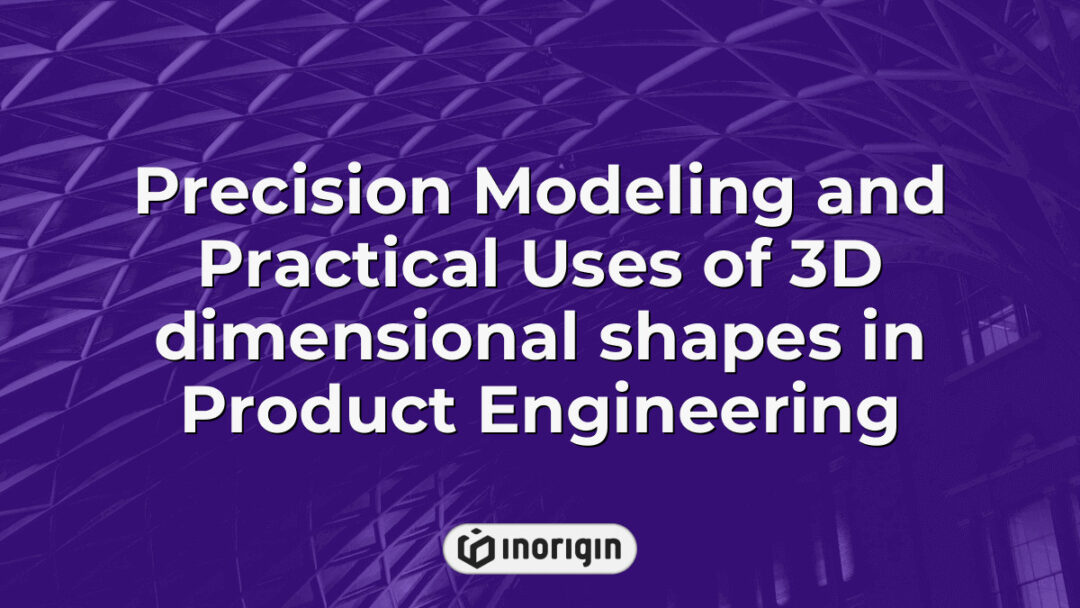In the intricate tapestry of engineering design, finite element analysis (FEA) serves as the thread that weaves together theoretical constructs and practical applications, symbolizing the bridge between abstract mathematical formulations and tangible innovations. As industries continually seek to push the boundaries of efficiency, durability, and performance, the role of finite element analysis companies emerges as pivotal in refining complex structures and systems. These specialized firms not only harness the power of computational techniques to simulate real-world behaviors but also provide invaluable insights that guide decision-making processes across diverse sectors, from aerospace to biomedical engineering. In exploring the landscape of FEA companies, one uncovers a realm where advanced technology converges with critical problem-solving, ultimately shaping the future of design and manufacturing.
| Aspect | Key Takeaway |
|---|---|
| Industry Role | Finite element analysis companies play a crucial role in bridging engineering theory and practical applications, enabling precise simulation and optimization of complex designs. |
| Technological Integration | Leading FEA companies incorporate advanced technologies like machine learning and adaptive meshing to enhance simulation accuracy and efficiency. |
| Key Applications | FEA is widely used across aerospace, automotive, biomedical, and construction industries to improve structural integrity and product performance. |
| Selection Criteria | Choosing the right FEA partner involves assessing industry expertise, consulting availability, flexibility, and experience with evolving project needs. |
| Quality Assurance | Top FEA firms ensure reliable results through comprehensive validation, verification, sensitivity analyses, and continuous staff training. |
| Innovations | Emerging trends in FEA include multi-scale modeling and integration with new composite materials, driving advanced design capabilities. |
| Industry Impact | Finely tuned FEA services contribute to developing market-ready, functionally robust, and aesthetically compelling products, supporting innovation from concept to production. |
Top Players in the Finite Element Analysis Industry
The finite element analysis industry is characterised by a number of key players who significantly influence the market dynamics. Companies such as ANSYS, Siemens, and Altair Engineering lead the sector, offering advanced engineering consulting services that leverage finite element analysis (FEA) for various applications, from structural analysis to thermal simulations. These firms not only deliver software solutions but also provide technical support and consulting services aimed at optimising design processes in numerous industries, including aerospace, automotive, and civil engineering. Furthermore, emerging technologies, such as artificial intelligence and machine learning, are increasingly being integrated within FEA methodologies, creating enhanced predictive capabilities and improving efficiency in simulations. The competition among these organisations has propelled the development of more sophisticated analytical tools, underscoring their commitment to innovation. Such advancements are critical in addressing complex engineering challenges, ultimately driving forward the effectiveness of design and analysis processes in diverse fields.
Key Features and Technologies Used by Leading Firms
In the field of finite element analysis (FEA), the key features and technologies adopted by leading firms significantly facilitate the simulation tools and design optimisation processes that underpin critical engineering tasks. Central to these advancements are several pivotal elements which guide the performance of FEA systems. First, advanced meshing techniques, which enhance the accuracy of simulations while reducing computational time, are fundamental. Second, multiphysics capabilities allow for the analysis of various simultaneous physical phenomena, such as thermal and structural interactions, providing richer insights into system behaviour. Third, integration with machine learning algorithms is becoming increasingly prevalent; this integration enables predictive capabilities that can improve the decision-making process in design optimisation. Finally, user-friendly interfaces and visualisation tools cater to a broader audience, making sophisticated simulations accessible to a wider range of engineers and designers.
The symbiotic relationship between these technologies not only boosts the efficiency of analysis but also stalwartly addresses complex challenges encountered in various sectors, from aerospace to civil engineering. As FEA continues to evolve, the interplay between traditional simulation tools and progressive methodologies inevitably shapes the trajectory of engineering practices, illustrating the profound impact of innovation in design optimisation. Each technology mentioned unfolds layers of potential, revealing a world where computational prowess meets human ingenuity, spurring advancements that were once considered unattainable.
Industry-Specific Applications of Finite Element Analysis
The industry-specific applications of finite element analysis (FEA) are nothing short of revolutionary, reshaping the methodologies employed in sectors ranging from aerospace to biomedical engineering. This sophisticated computational technique serves as a linchpin, facilitating structural analysis that ensures the resilience and performance of critical components under myriad conditions. For instance, within the realm of thermal applications, FEA is indispensable for engineers as they model heat distribution in complex geometries, enabling the design of components that withstand extreme thermal stresses, thus ensuring reliability and longevity of products. In the automotive sector, leading manufacturers leverage FEA to optimise crash simulations; this enhances safety features and compliance with stringent regulations—indeed, the stakes could not be higher, as the interplay of safety and performance can impact lives directly. Furthermore, within the construction industry, firms utilise FEA in the assessment of structural integrity under dynamic loads, such as those imposed by seismic events, securing not just compliance, but the very safety of urban environments. Emphasising the critical role of finite element analysis across diverse industries, the ramifications of employing this technology resonate deeply, directly influencing both economic factors and societal welfare at large.
Emerging Trends and Innovations
Within the realm of finite element analysis (FEA), a juxtaposition arises between traditional methodologies and emerging innovations that indicate a significant shift in the field. On one hand, established simulation techniques provide robust insights into material behaviour and structural performance; on the other, the integration of advanced composites introduces new complexities and opportunities for optimisation. Recent advancements in computational power and algorithm development have augmented the versatility of FEA, enabling simulations that more accurately reflect real-world conditions. For instance, the adoption of machine learning algorithms has accelerated the analysis process, thereby enhancing predictive capabilities; in comparison, traditional methods often require extensive manual input and time-consuming iterations. Companies are now exploring these synergies to apply finite element analysis to novel materials that exhibit unique properties, particularly in aerospace and automotive sectors where performance and reliability are paramount. Such innovations, including multi-scale modelling and adaptive meshing techniques, directly respond to the industry’s increasing demand for sophisticated analysis methods. The evolution of finite element analysis thus reflects a broader trend of blending conventional knowledge with cutting-edge technology, paving the way for a future where simulation techniques are not merely an analytical tool but a cornerstone of design and innovation in complex sectors.
Choosing the Right Finite Element Analysis Partner
Selecting the right finite element analysis (FEA) partner involves a series of crucial considerations that can significantly impact project outcomes. To establish a successful collaboration, companies should evaluate potential partners based on several criteria. First, expertise in specific industries is paramount; different sectors, such as aerospace or biomedical engineering, may require tailored approaches to FEA. Second, the availability of consulting services is essential, enabling firms to receive continuous support throughout the project lifecycle. Additionally, the ability to adapt to evolving project requirements cannot be overlooked; the chosen partner should demonstrate flexibility and responsiveness. Lastly, it is prudent to assess their experience in outsourcing arrangements, as this greatly influences operational efficiencies. In this context, a thorough evaluation process that includes such criteria can streamline the decision-making and enhance the probability of a successful partnership. This strategic approach not only mitigates risks but also leverages external expertise, fostering innovation and sustainability in engineering practices.
Frequently Asked Questions
What are the educational qualifications required to work in a finite element analysis company?
The educational qualifications required for employment in finite element analysis companies reveal a juxtaposition between technical expertise and practical experience. On one hand, a solid academic background in engineering disciplines such as mechanical, civil, or aerospace engineering is often mandated; degrees typically range from Bachelor’s to Master’s level. An understanding of physics and mathematics is indispensable as these subjects underpin the principles of finite element analysis (FEA). Conversely, the increasing relevance of software skills cannot be overlooked; proficiency in tools such as ANSYS, Abaqus, or COMSOL Multiphysics is frequently just as crucial as formal educational credentials. These skills demonstrate an ability to apply theoretical knowledge in practical settings. Additionally, many employers favour candidates with experience in research projects or internships that provide exposure to real-world applications of FEA, often looking for a balance between classroom learning and hands-on problem solving. The combination of rigorous academic training and applicable software knowledge shapes a candidate’s capacity to contribute effectively to projects involving complex simulations and analyses, underscoring the multifaceted nature of the field.
How do firms ensure the accuracy and reliability of their finite element analysis results?
In finite element analysis (FEA), ensuring the accuracy and reliability of results is paramount, as decisions based on these outcomes can have significant implications in various engineering fields. To achieve this, firms employ a multi-faceted approach; for instance, rigorous validation and verification processes are established. Validation typically involves comparing FEA results with experimental data, ensuring that models accurately reflect the physical phenomena under investigation. On the other hand, verification checks the computational models against established standards and known solutions, making certain that the numerical methods used are sound. In addition to these methods, firms also frequently utilise sensitivity analysis to comprehend how variations in input parameters affect output results. Such analyses highlight which factors most influence performance, allowing engineers to focus on critical variables. Furthermore, continuous training of personnel in both software tools and theoretical foundations plays a crucial role in upholding quality standards. All these elements contribute to creating a framework where confidence in FEA outputs remains high; thus, companies can produce reliable analyses that support effective design and decision-making processes across various applications, from aerospace to civil engineering and beyond.
What are the common challenges faced by companies in the finite element analysis sector?
The finite element analysis (FEA) sector presents itself as a landscape filled with complexities and hurdles that require deft navigation for success. Initially, the challenges stem from the inherent limitations of computational resources, which can constrain the scope and scale of simulations, ultimately affecting results. Additionally, the proficiency of analysts plays a significant role; discrepancies in expertise can lead to varied interpretations of the same data. Another layer of difficulty emerges from software discrepancies, where variations in algorithms and version updates can yield inconsistent outputs. Furthermore, maintaining collaboration among interdisciplinary teams represents a persistent challenge, as effective communication is crucial when merging insights from varied engineering domains. Thus, addressing these multifaceted challenges demands not only technical skills but also strategic planning and cohesive teamwork to foster innovation and reliability in results.
Conclusion
In the realm of engineering, finite element analysis companies serve as the architects of precision, sculpting complex structures with the finesse of a master craftsman. The importance of such enterprises cannot be overstated, as they illuminate the path toward innovation and reliability, paving the way for advancements that echo through the corridors of technology.
Related posts:
- Finite Element Analysis Enhancing Product Engineering Precision at Inorigin
- Finite Element Method Applications Enhancing Precision Engineering at Inorigin
- How Can FEA Analysis Enhance Your Product’s Performance Through Optimized Design and Durability
- Finite Element Analysis FEA Techniques Driving Precision Engineering Innovations
- Optimizing Mesh Generation and Coupling Techniques in fea cfd for Advanced Fluid Dynamics
- What is FEA Analysis Revealing About Structural Integrity and Design Optimization




